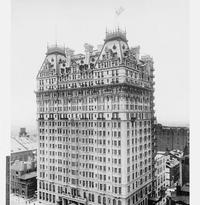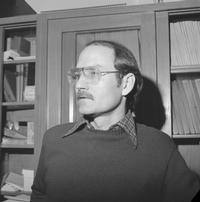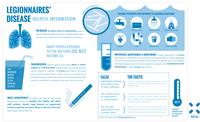Philadelphia was the place to be in July of 1976. Even Queen Elizabeth II of Great Britain came to present the Bicentennial Bell, cast in the same foundry as our Liberty Bell. The 4,000+ members of the Pennsylvania chapter of the American Legion no doubt considered themselves fortunate to be attending their annual convention at the historic Bellevue-Stratford Hotel on Broad Street—at least until they got sick.
Before summer’s end, over 200 people became infected with a mysterious respiratory illness and 34 died. Before the end of the year the CDC launched the largest investigation in its history, Congress investigated the CDC investigation and the Bellevue Stratford declared bankruptcy.
The story does have a hero: Joseph McDade, a CDC microbiologist, spent his Christmas holiday reexamining all of the microscope slides of tissue from the victims’ lungs. He eventually discovered an unknown bacteria which he named Legionella Pneumophila.
Timeline of the outbreak:
- July 21 – First day of the convention at the Bellevue Stratford.
-
July 24 – Convention finishes with a parade of Legionnaires through Center City.
-
August 2 – 12 Legionnaires have died and dozens more have been hospitalized with a pneumonia-like illness.
-
August
-
CDC sends 20 epidemiologists to Pennsylvania to gather evidence from victims and investigate the hotel’s environment.
-
Swine flu and parrot fever are the leading suspects.
-
Legionnaires continue to sicken and die, but their families and friends are not affected.
-
Other victims include a bank teller who worked across the street from the Bellevue Stratford and a bus driver who had picked up passengers there.
-
No other outbreaks occur in Philadelphia.
-
Detailed interviews with victims reveal that they had all spent time in the Bellevue Stratford lobby or on the sidewalk outside.
-
-
September – November
-
Researchers determine the disease is not contagious.
-
Investigators comb every inch of the Bellevue Stratford and its systems, taking samples for testing.
-
All testing proves inconclusive.
-
-
December – January
-
Joseph McDade, a CDC microbiologist, spends days carefully studying tissue slides from the early days of the investigation and eventually finds an unknown bacteria in lung samples of the victims.
-
It is determined that this bacteria, dubbed Legionella pneumophila, had been growing in the warm water of the collection pans under the hotel’s rooftop air conditioning system and was dispersed in the mist generated by the unit. The mist fell to the sidewalk and was sucked into the lobby through a vent.
-
-
Afterwards
-
November 1977, the Senate holds hearings to investigate the CDC’s handling of the Legionnaires' outbreak.
-
In 1979, the CDC determines that Legionella pneumophila is the same as an unclassified bacteria isolated in 1947 and is the cause of some previously unexplained outbreaks.
-
OSHA develops guidelines for designing and maintaining HVAC systems to prevent the growth of Legionella bacterium.
-
The Bellevue-Stratford building is completely remodeled, including a new HVAC system. The cooling tower is cleaned and water samples tested regularly.
-
Under Hyatt ownership, the Bellevue is once again a premier luxury hotel.
-
Legionnaires' Disease outbreaks still occur regularly throughout the world, usually traced to aging and improperly maintained HVAC systems or hot tubs.
-
In 2015, nearly 5000 people were diagnosed with Legionnaires' Disease in the U.S.
-
Read more about it:
- Disease Detectives by Melvin Berger
- Legionnaire's Disease by Susie Derkins
- Anatomy of an Epidemic by GordonThomas
- Outbreak by Mark P. Friedlander
- Pennsylvania Disasters: True Stories of Tragedy and Survival by Karen Ivory
Have a question for Free Library staff? Please submit it to our Ask a Librarian page and receive a response within two business days.



